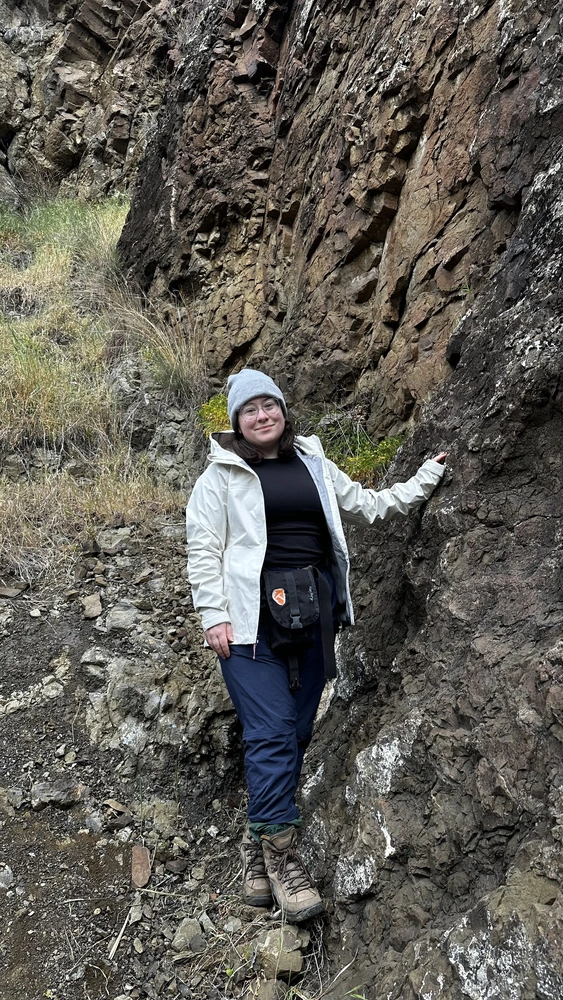
When Hayley Woodrich learned she'd been awarded the National Science Foundation Graduate Research Fellowship in June, she almost didn’t believe it.
“I got an email from NSF and thought, ‘Oh, great! Feedback is finally out!” she said. “Then I opened the email, started reading, and said, ‘Wait a minute.’ I took a screenshot and sent it to my advisors, saying, ‘What?’”
The honor is one of the most competitive and prestigious fellowships for graduate students in the sciences and will support Woodrich—now a graduate student in the Department of Earth Science & Environmental Change (ESEC) at the University of Illinois—as she investigates seismic swarms and magma movement under Yellowstone National Park.
Her research, guided by ESEC professors Trish Gregg and Ross Maguire, centers on a unique sequence of earthquakes in Yellowstone in 2008. “Everyone’s interested in earthquakes,” Woodrich said. “They happen all the time, and when they happen in rapid succession, we call that a seismic swarm. We’re interested in whether those swarms are related to magma movement or hydrothermal activity in volcanic regions.”
The 2008 Yellowstone swarm is the only known seismic swarm in the park’s history associated with surface deformation. Using deep-learning tools to detect earthquakes and updated tomography models developed by Maguire in 2022, Woodrich is reexamining the event to better understand how and where magma is stored beneath the surface.
“Ross’s imaging showed that the magma melt location is more shallow than previously thought,” she explained. “A lot of those earthquakes occurred where there’s inferred melt presence. So now we’re curious to see if that remains true when we relocate the earthquakes with the new models in mind—and what that means for the Yellowstone magma system.”
Her NSF-funded work will expand on this project by taking a broader, long-term view of seismicity in the region. “Instead of looking at one 12-day period, we want to look at years of data to see if we can infer anything about the distribution of melt lenses under Yellowstone, how they’re connected, and just try to get a sense of how the system stores its magma,” she said.
Her interest in Yellowstone began during a Research Experiences for Undergraduates program at Montana State University, where she joined the Yellowstone Research Unit. “That really kickstarted my interest in Yellowstone,” she said.
That experience was built on a personal turning point. As an undergraduate at Illinois, Woodrich had originally studied political science and communication. It wasn’t until she took History of the Earth System in her final semester that things shifted. “I wasn’t bored. I could see a future in this kind of work,” she said. After graduating in spring 2019 and heading into the workforce, Woodrich couldn’t shake her curiosity about geology. She kept exploring the subject through community college courses, and two years later, she made the leap, reenrolling at Illinois to pursue it full time.
The NSF Graduate Research Fellowship gives her more flexibility to dive into her work. “Time is a big thing when you’re on a fellowship,” she said. “I loved being a teaching assistant, but as you progress through graduate school, having a little more freedom is great.”
She’s especially excited for more opportunities to do field work—something the fellowship helps make possible.
“It doesn’t feel real,” Woodrich said. “It’s very door-opening. I’m extremely grateful.”